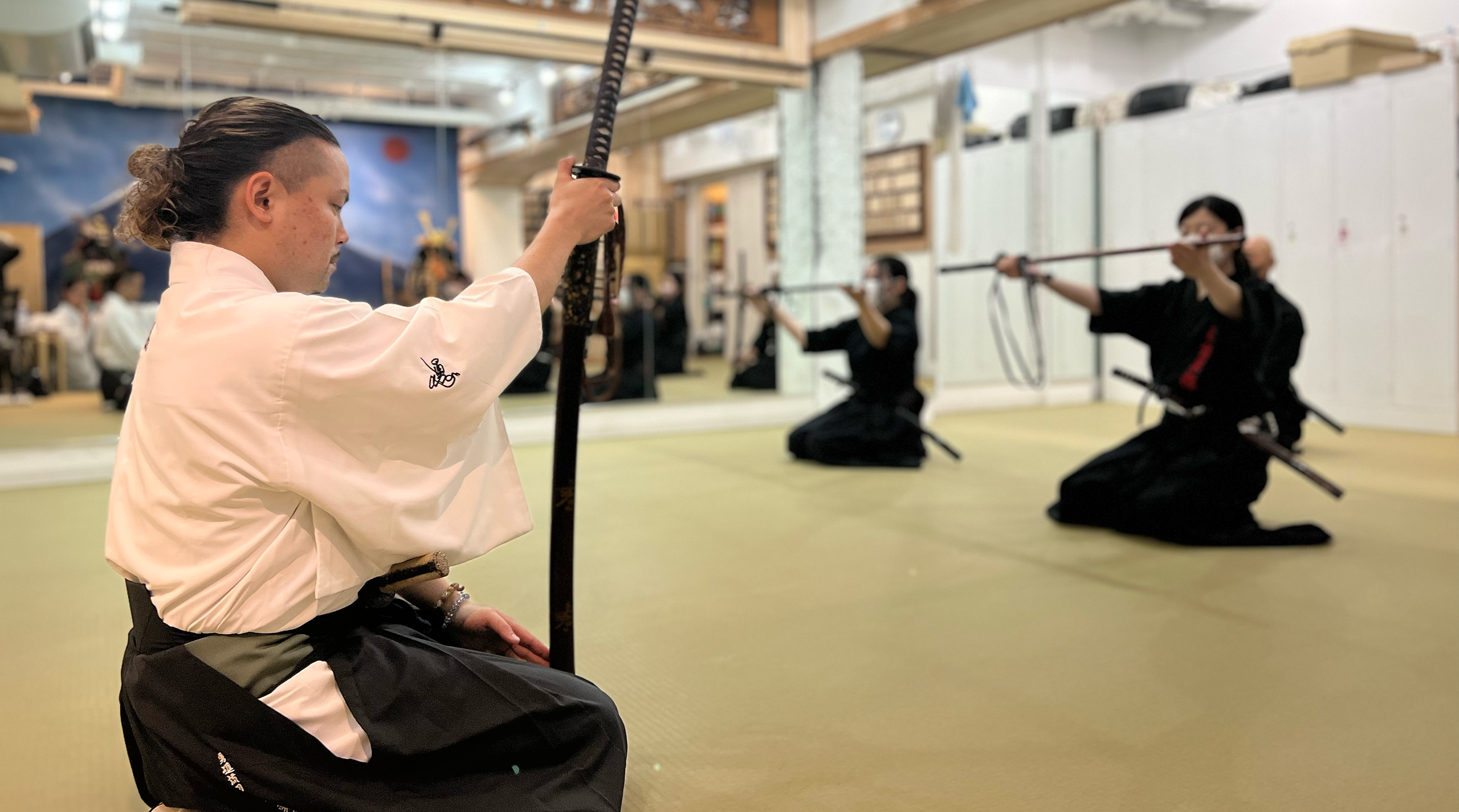Hello everyone. Thank you for reading this article. I’m Shogo, the manager of this website and the interpreter/instructor at Yushikan Kyoto’s Samurai Training Activity.
Where we hold our Yushikan Kyoto’s Samurai Training Activity is a real Iai/Kenjutsu dojo where more than 20 people regularly train 2~3 weeks a day, 3 hours each. Many people often ask us what regular training is like at the dojo. Let me explain.
First, we all perform a katana bowing and a bowing to the kamidana (Shinto altar). The kamidana is the guardian deity of the dojo, and each time we worship it to pledge that we are not practicing budo for the sake of violence. In Iai training, katana bowing is also performed. The katana has been considered sacred since ancient times, and the katana bowing should always be performed with the utmost reverence.
The first hour of training will be for iai. Iai is the art of fighting with a katana drawing from its sheath. In Yushin-ryu, there are about 100 different Kata of Iai. At each training session, about 30 different forms are practiced. Yushin Sensei shows a model in front of his students, who then imitate him and practice the techniques in unison. It is important to watch the teacher’s techniques carefully and move your body in the same rhythm.
Next, we will have Kenjutsu training. Kenjutsu training is an actual Kata (fighting form) with a partner using a wooden sword. The first part of the training is warming up by running with the wooden sword and practicing uke-nagashi, in which participants strike each other with the wooden sword in succession. After warming up, we practice Kenjutsu Kata. There are a total of 15 Kata in Kenjutsu. Shoden (elementary level) is 5 kata and Chuden (mid-level) is 10 kata.
The last hour is for Shizan (mat cutting) training. For safety reasons, each student cuts mat one at a time. The senior students with the highest rank cut the mat first. Each student is allowed to cut four mats, but it is basically up to the student to decide what technique to practice. However, beginners first practice thoroughly until they master the basic cutting technique called Kesa-giri (diagonal cut).
The training described here is posted on my Youtube channel Let’s ask Shogo, so please watch that video as well.
If you want to participate in any of our activities, please book through our Airbnb or TripAdvisor pages. We look forward to meeting you all.


この記事へのコメントはありません。